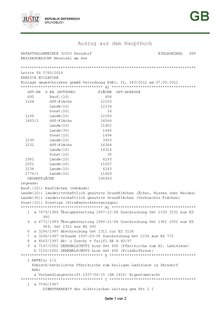Factory goods

Factory goods (also church factory , Kirchenärar or Fabrica ecclesiae ) are the church building, but also the property of a church, a monastery or a monastery intended to cover the costs of the worship service and for the maintenance of the church building or the monastery or monastery buildings .
At the time of the private church and monastery system, the totality of the property of a church represented a closed unit, and the church master could freely dispose of it. It was only with the decline of the private church system in the 11th and 12th centuries that a separately administered church property became possible. The congregation, which donated for the upkeep of the church and the cost of the worship service, had an interest in withdrawing this part of the church property from the beneficiary 's access. For this reason, the factory goods, which consisted of various donations, foundations and offerings, were increasingly managed separately and, over time, achieved considerable independence. Since the beginning of the 13th century, the factory goods increased through sea equipment foundations , bequests , gifts, indulgences and oblations . Since then, so-called carers have increasingly been appointed to manage the property.
In the cities at least, the parish churches' manufactured goods, which were largely independent of parish property, came increasingly under the control of the council in the course of the 14th century , which at the same time gained greater influence over other areas of church affairs, in particular taking church building tasks under its own control and financing them especially the factory goods made up of donations from the community.
Individual evidence
- ↑ An Augsburg document from 1298 mentions the "Zechmaistaer" of the Frauenkirche and other "phlegans" ( Rudolf Zinnhobler , 1961).
- ^ Gentz, pp. 20-21.
Web links
- Fabrica, in Meyer's Großes Konversations-Lexikon, Volume 6. Leipzig 1906, p. 246.
- Kirchenärar, in Meyer's Großes Konversations-Lexikon, Volume 11. Leipzig 1907, p. 40.
- Ulrike Gentz: The hall choir in the urban brick architecture of Central Europe 1350–1500 (PDF file); A study comparing art-geography (Studies on Brick Architecture, Vol. 6), Lukas Verlag für Kunst- und Geistesgeschichte, Berlin, 2002, ISBN 3-931836-75-4
- Rudolf Zinnhobler: The beginnings of the Wels light office. In: Oberösterreichische Heimatblätter (Ed. Institut für Landeskunde von Oberösterreich), vol. 15, issue 4, Linz, 1961, pp. 269–272, online (PDF; 424 kB) in the forum OoeGeschichte.at

